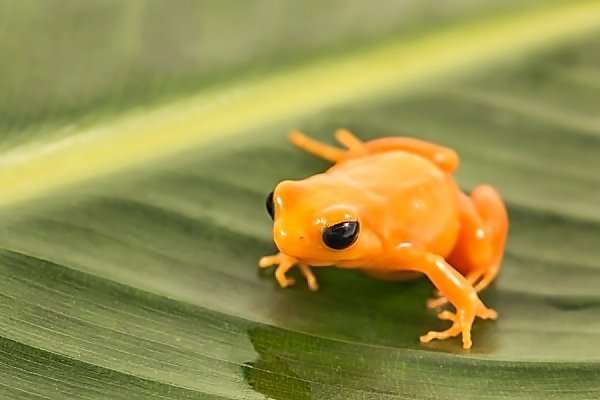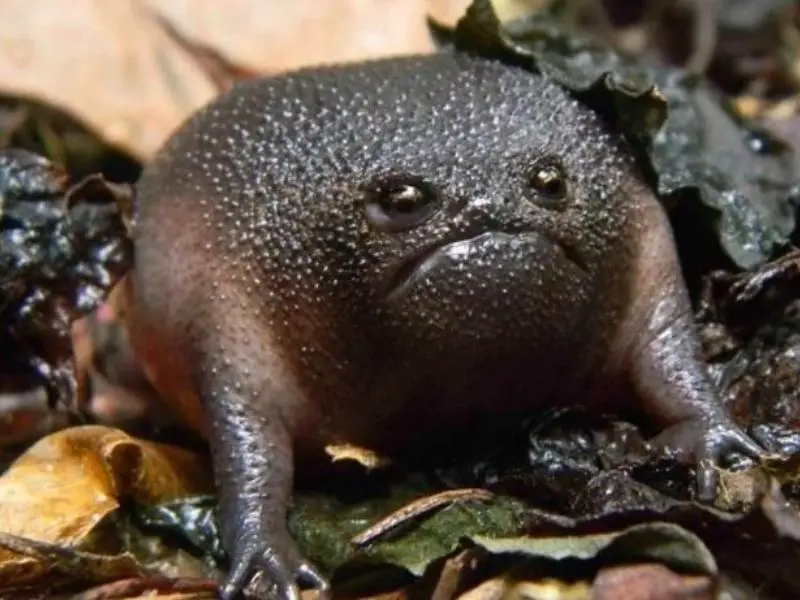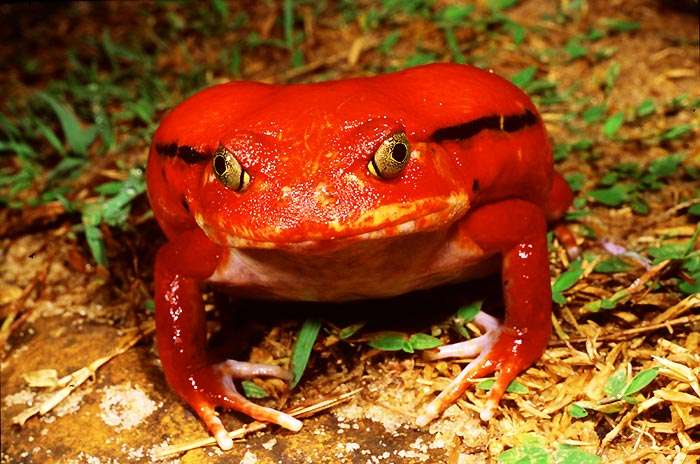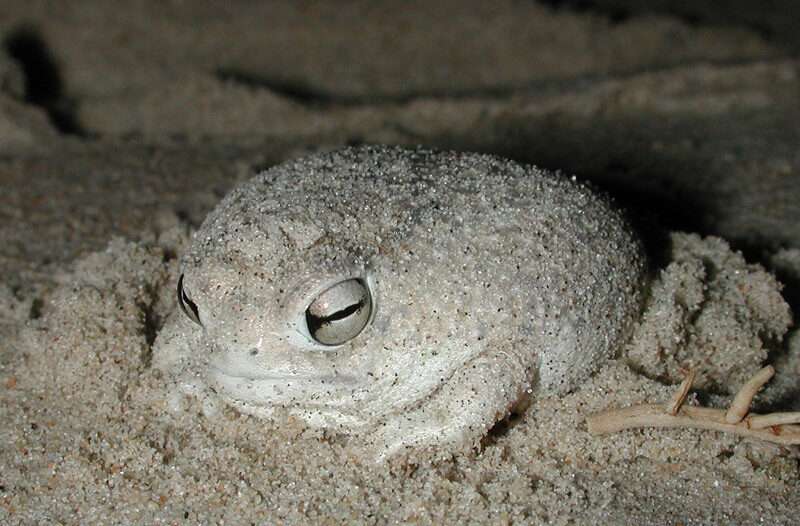
A tiny, terrestrial frog that is native to Madagascar is called the golden mantella (Mantella aurantiaca). Its distribution is extremely constrained and is centered on the town of Moramanga in three different regions: the Beparasy and Ambohibary Communes, the Torotorofotsy Wetland to the northwest of Andasibe, and the region of Ambakoana. Due to its small geographic range in an area under extreme anthropogenic pressure, Mantella aurantiaca is one of Madagascar’s most endangered amphibian species. It can also be at danger from excessive pet trade tax collecting.
Appearance
The golden mantella is a 20–26 mm long, evenly colored yellow, orange, or red frog. There are red flash marks on the inner leg. Although tiny, the tympanum is discernible. Predators are warned by the frog’s brightly coloured skin that it is deadly. It is believed that the golden mantella’s dazzling colours serve as an illustration of aposematism, alerting potential predators to the frog’s deadly nature.
Habitat
Golden mantella frogs are native to central-eastern Madagascar, where they can be found in a very small area at altitudes of more than 900 meters. They occupy sunny pandanus woodland regions. In swampy areas, they frequently exist among the vegetation.

Reproduction
After the first significant rainfall of the year, when there is an abundance of food, breeding usually begins. With their call, males draw females. Without giving her an embrace, the guy moves quickly to the female’s back. In moist leaf litter, moss, underbark, and pebbles close to a water supply, the females lay their eggs. Each clutch consists of 20 to 60 white eggs, each of which has a diameter of up to 0.08 inches (2 millimeters). The eggs are promptly fertilized by the male.
The tadpoles hatch out two weeks later. When it rains heavily, they either squirm into the water or are washed into little puddles. The transformation of tadpoles into 0.4-inch (11-mm) long froglets takes about 70 days. A few weeks later, they develop their usual yellow-red colouring, and 12 to 14 months later, they become sexually mature.
Keeping as Pet
These frogs are energetic, yet they hop quickly, briefly, and randomly instead of leaping. For a trio or two pairs, they should receive a minimum of a 15-gallon rainforest terrarium. The substrate of the tank should be living or damp sphagnum moss (or a carpet of green woodland moss). Vining plants, such “pothos,” should be included in the frog’s terrarium as well for aesthetic purposes, as visual barriers, and to aid in producing a high relative humidity. Additionally, the terrarium needs to have a few little hide boxes and a few Petri dishes filled with fresh water. Many mantella keepers employee access holes chopped into half coconut shells as hide boxes.
Keep the terrarium’s temperature between 78 and 85 °F. A glass cover over everything but the area where the light is placed will encourage high terrarium humidity. Full-spectrum (UV generating) lights will assist keep the plants alive. Once or twice daily, the tank should be lightly misted; nevertheless, you shouldn’t let the substrate become saturated. Frogs quickly absorb contaminants through their skin, therefore it’s critical to maintain spotless water and substrate.
Food and Pet
The golden mantella frog is an insectivorous species that eats a wide variety of insects, including termites, fruit flies, ants, and other small creatures. These frogs are fed a variety of insects at the zoo, including fruit flies, springtails, and pinheads.
The golden mantella is occasionally seen as a pet and is also kept in captivity by zoos and exotic animal collectors. They are well-liked because of their nocturnal behaviour, appealing colour, and relative ease of maintenance once established. Care guides for this species are readily available. However, the population of the golden mantella is declining and it is highly threatened.
Table





